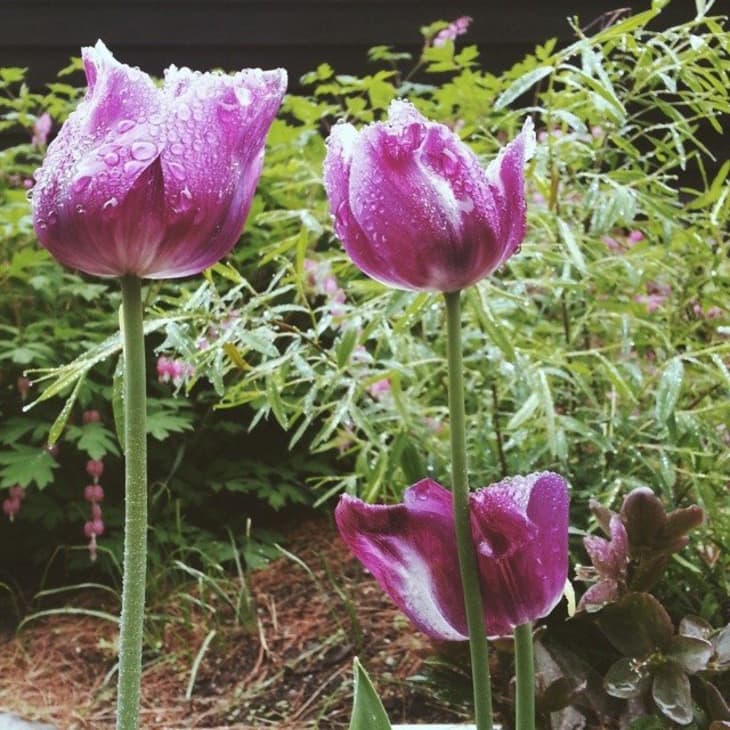Cleaning Up the Spring Bulbs: What NOT To Do

As the last of the daffodils, tulips and other spring bulbs fade away, there is a natural desire to clean up the remaining shriveled flowers and the inevitable floppy leaves that were so welcome just a few weeks ago, but which now appear old and messy. But don’t do it!! Here is why.
Bulbs need that greenery because as the flowering ends, those greens stay on and continue to collect energy from the sun, feeding it back into the bulb. Clearing away the foliage now will take away the plant’s ability to feed itself and next year, come bloom time, you will notice diminished vigor in the blossoms, and you may even loose plants altogether. Leave the foliage alone and let the bulb prepare for next year’s show.
But, you ask, what to do with this mess?
Here is what I recommend.
1) Accept that real gardens aren’t visions of perfection. If, however, that is what you desire, then you will have to pay in time and money. Real plants wax and wane, and they aren’t always pretty. They need their cycles and downtime just like we do, and if you don’t let them have it, they will have very short lives.
2) You can go ahead and take off the dead flowers just below the head. Don’t take off the whole flowering stalk (the plant needs that!), but feel free to take of the deadhead.
3) Don’t waste your time braiding the grassy heads or wrapping them up into balls bound with rubber bands. This doesn’t help the plant with the needed photosynthesis, and it is a waste of your time.
4) When the leaves start to yellow, then you can go ahead and cut them back (this is usually about 6 weeks after blooming stops). You don’t need to wait for them to die completely — as soon as they turn yellow, you can take the shears to them.
5) Plant something else. Something else could be a plant that will mask the dying foliage. A good option might be Bleeding Hearts (though you will be faced with the same conundrum again in another month when this too dies back). Bushy grasses are a good option, as are a whole myriad of other perennials (I use lavender in one of my planting beds). Your strategy could also be to re-direct. Perhaps you just accept that the area of your garden that was the superstar last month will not be a superstar this month. Plan and plant another area whose blooms are at their peak in June in July so you don’t notice the spring dieback quite so much.